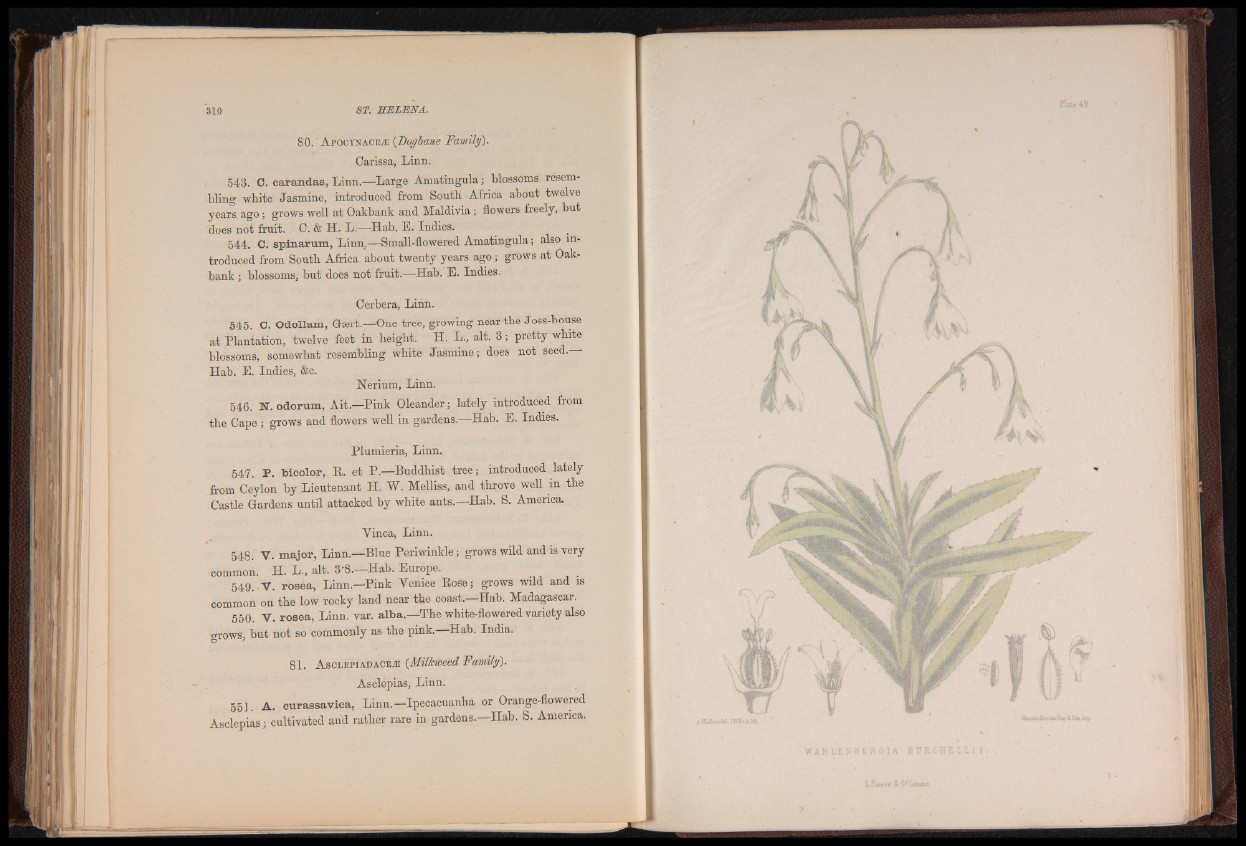
ST. H E L E N A .
80. ApocynacejE (Dogbane Family).
Carissa, Linn.
543. C. carandas, Linn.—Large Amatingula; blossoms resembling
wbite Jasmine, introduced from Soutb Africa about twelve
years, ago; grows well at Oakbank and Maldivia; flowers freely, but
does not fruit. C. & H. L.—Hab. E. Indies.
544. C. spinarum, Linn,.—Small-flowered Amatingula; also introduced
from South Africa about twenty years ago; grows at Oakbank
; blossoms, but does not fruit.—Hab. E. Indies.
Cerbera, Linn.
545. C. Odollam, Gsert.—One tree, growing near the Joss-house
at Plantation, twelve feet in height. H. L., alt. 3; pretty white
blossoms, somewhat resembling white Jasmine; does not seed.
Hab. E. Indies, &c.
bferium, Linn.
546. N. odorum, Ait.—Pink Oleander; lately introduced from
the Cape ; grows and flowers well in gardens.—Hab. E. Indies.
Plumieria, Linn.
547. P. bicolor, R. et P.—Buddhist tree; introduced lately
from Ceylon by Lieutenant H. W. Melliss, and throve well in the
Castle Gardens until attacked by white an ts—Hab. S. America.
Yinca, Linn.
548. V. major, Linn.—Blue Periwinkle; grows wild and is very
common. H. L., alt. 3'8.—Hab. Europe.
549. V. rosea, Linn.—Pink Venice Rose; grows wild and is
common on the low rocky land near the coast.—Hab. Madagascar.
550. V. rosea, Linn. var. alba.—The white-flowered variety also
grows, but not so commonly as the pink.—Hab. India.
81. A s c l e p i a d a c e ^e (Milkweed Family).
Asclepias, Linn.
551. A. curassavica, Linn.—Ipecacuanha or Orange-flowered
Asclepias; cultivated and rather rare in gardens.—Hab. S. America.